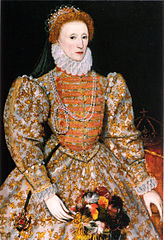
While spending time sheltering-in-place at home, I, like many other people, considered previous pandemics. Many media stories compare COVID-19 to the 1918 H1N1 virus pandemic. But that event is one of many throughout history, including small pox, also known as the speckled monster, a virulent viral disease once endemic in Europe, Asia, and Arabia. It killed three out of every ten infected people, leaving the survivors with pockmarked scars, occasional blindness, and immunity to future exposure to the disease.
In 1562 at the age of 29, Queen Elizabeth I contracted the disease. Treatment consisted of prayer, balancing bodily humors through bloodletting, and wrapping the victim in a scarlet cloth that allowed red light to heal the rash and underlying disease.
Elizabeth survived with what was said to be light scarring, but for the rest of her life she applied a white facial mask mixture of vinegar and lead, illustrated by her portrait. Many believe the queen’s later hair loss and missing teeth can be attributed to lead poisoning.
Mary Montagu’s Discovery
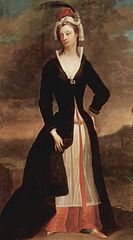
Two hundred years later, small pox continued to kill 400,000 people a year. In 1715 Lady Mary Wortley Montagu survived the disease, emerging from her sickbed with scars and without eyelashes.
The next year, Mary accompanied her husband on his posting as British ambassador to Constantinople and made a significant discovery. In her experience, people in Constantinople seldom suffered from small pox. Mary’s investigations led her to a preventative treatment that may have originated in China. Writing home, Mary reported,
There is a set of old women, who make it their business to perform the operation, every autumn, in the month of September, when the great heat is abated. People send to one another to know if any of their family has a mind to have the small-pox; they make parties for this purpose, and when they are met (commonly fifteen or sixteen together) the old woman comes with a nut-shell full of the matter of the best sort of small-pox, and asks what vein you please to have opened. She immediately rips open that you offer her, with a large needle (which gives you no more pain than a common scratch) and puts into the vein as much matter as can lie upon the head of her needle, and after that, binds up the little wound.
Mary was so impressed and so desperate to protect her four-year-old son from the disease, she arranged for Dr. Charles Maitland to perform the procedure on her child.
When Mary returned home, her discovery was treated with disdain until another small pox outbreak threatened London in 1721. Mary arranged to have her young daughter inoculated before an audience that included the King’s physician. Caroline, the Princess of Wales, sponsored further research by offering seven prisoners awaiting execution at Newgate Prison the chance to be inoculated instead. All survived.
Small Pox Inoculation in America
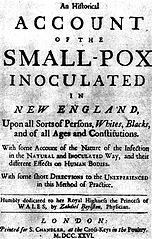
News of the procedure traveled to the American colonies where New England preacher Cotton Mather arranged for Dr. Zabdiel Boylston to inoculate his children. Inoculation carried a number of risks, including death, but the prospect of lifelong immunity to small pox persuaded people to undergo the treatment.
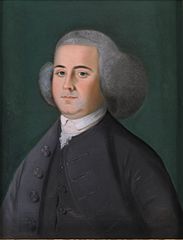
In 1764 John Adams postponed his wedding to Abigail during a small pox epidemic, and decided to undergo the three week procedure and recuperation. Several weeks before the procedure, doctors placed him on a diet excluding meat, milk and eggs which he ignored. Immediately before inoculation, he ingested a strong purgative to clear his system. John reported the worst part of the treatment was “a long and total abstinence from every thing in nature that has any taste, two heavy vomits, one heavy cathartick, four and twenty mercurial and antimonial pills, and three weeks close confinement to an house.”
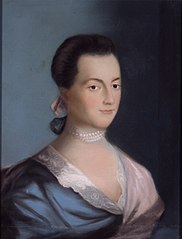
Twelve years later while John was away at the Continental Congress, Abigail took her four children under the age of eleven to her aunt and uncle’s house in Boston so Dr. Thomas Bullfinch could perform the inoculation. Afterwards, Abigail wrote John that “the little ones are very sick and puke every morning,” but otherwise doing well.
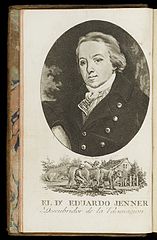
In 1796 Edward Jenner introduced a different method of inoculation. He observed that dairymaids often developed blisters from cow pox on their hands. People inoculated with cow pox pus had a milder after affect and still became immune from small pox. As this method became more accepted, rates of small pox dropped. The fight against small pox continued until 1980 when the World Health Organization declared the disease eradicated.
There are some lessons to draw from the small pox example. The most important one is that a vaccine against COVID-19 will be developed. Not as quickly as we would like, but not as slowly as the one that stopped small pox. Secondly, most remedies prescribed in the 16th century are not useful today. We no longer believe being wrapped in a red blanket will cure disease. Nor, I suggest, will ultra-violent light.
Until COVID-19 is under control, our preventatives are simple. Everyone should
- Washing their hands thoroughly several times a day
- Wear a face mask in public spaces
- Stay home as much as possible
😷😷😷
Queen Elizabeth, c1575, The Darnely Portrait
Lady Mary Montague, 1716, by Charles Jervas
An Account of Small Pox by Boylston. Welcome Images.
John Adams, 1766, by Benjamin Blyth
Abigail Adams, 1766, by Benjamin Blyth
Portrait of Edward Jenner. Welcome Images
“Abigail Adams and the Inoculation Decision.” Presidential History Blog. Dec. 4, 2017.
“Love in the Time of Smallpox.” Plodding through the Presidents. Apr. 13, 2014.
Thomas Hager. “How One Daring Woman Introduced the Idea of Smallpox Inoculations to England.” Time. Mar. 5, 2019.
Marcy McCall MacBain. “Unhealthy Times of Queen Elizabeth I.” CEBM. Oct. 17, 2018.

Sandra Wagner-Wright holds the doctoral degree in history and taught women’s and global history at the University of Hawai`i. Sandra travels for her research, most recently to Salem, Massachusetts, the setting of her new Salem Stories series. She also enjoys traveling for new experiences. Recent trips include Antarctica and a river cruise on the Rhine from Amsterdam to Basel.
Sandra particularly likes writing about strong women who make a difference. She lives in Hilo, Hawai`i with her family and writes a blog relating to history, travel, and the idiosyncrasies of life.

